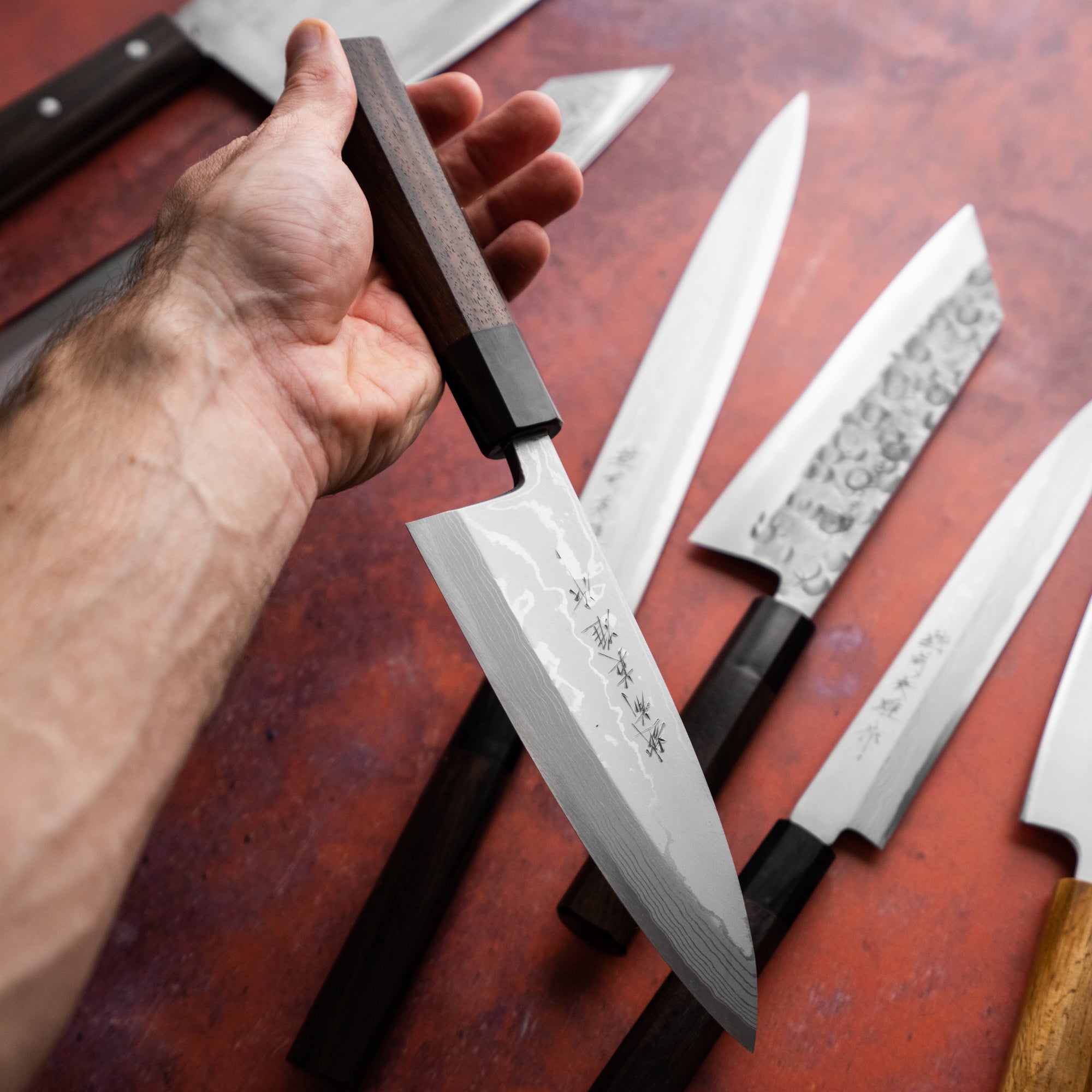
Forged vs Stamped - what is the difference?
So you’ve decided you need some new kitchen knives, but how do you know what to buy? With so many brands and designs available, it’s easy to get confused about which type of knife will be best for you. Budget is always an important consideration, so when someone mentions a 'forged' or 'stamped' blade, what do they mean?
What is the difference between forged and stamped kitchen knives?
Forged knives are crafted from a single steel bar. The steel is heated before being hammered or pounded to the desired shape. This hammering manipulates the steel molecules to become stronger, which means a forged knife can retain its edge for a very long time. Forged kitchen knives are often individually crafted, although some knife makers have developed technology to allow for machine manufacture. Stamped knives, as you might expect, are created by being stamped out from a larger piece of steel. The knife is honed and heated after being cut to shape, which maximises its hardness and durability, but it's performance may not be to the same standard as a forged knife.
Forged knives in detail
Forged knives are usually heavier than stamped knives. A skilled craftsman can forge a particular spine thickness and what is called a distal taper, a thicker spine at the heel of the blade, and thinning out to the tip of the knife. This particular balance of weight distribution is pleasing to use and gives a sense of stability to more demanding cutting tasks. The robust nature of a forged knife makes it good to use with awkward fruit and vegetables such as squash or melon, but be sure to use thicker knives for harder root vegetables.
Benefits of forged knives
· Forged knives are strong and robust and can handle tougher kitchen tasks well · They are less likely to warp or bend due to their extra toughness
Drawbacks of forged knives
· Forged knives usually cost more due to the skills, time and resources required to craft them.
Stamped knives in detail
Stamped knives are cut or stamped from a large sheet of steel. This process is relatively easy compared to forging, and requires less man-hours to complete. They are then heat treated to improve their durability and honed to shape. This type of manufacture means stamped knives are generally thinner and lighter.
Stamped knives often lack the toughness, durability, and strength of their forged counterparts.
Benefits of stamped kitchen knives
· Stamped knives are generally lighter than forged knives, so they can be used for longer
· They are often cheaper than forged knives due to their faster and less labor intensive manufacturing process
Drawbacks of stamped knives
· Stamped knives generally lack the toughness of forged knives
Stamped knives may not be as visually appealing or have the 'tamashi' or 'soul' of the blacksmith as easily felt
Help from the experts
Choosing a kitchen knife takes time and understanding the difference between forged and stamped knives is just one aspect of your decision-making. Our team at Chefs Edge have years of experience and a real passion for helping our customers discover their ideal kitchen knives.Share
